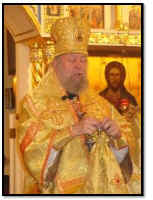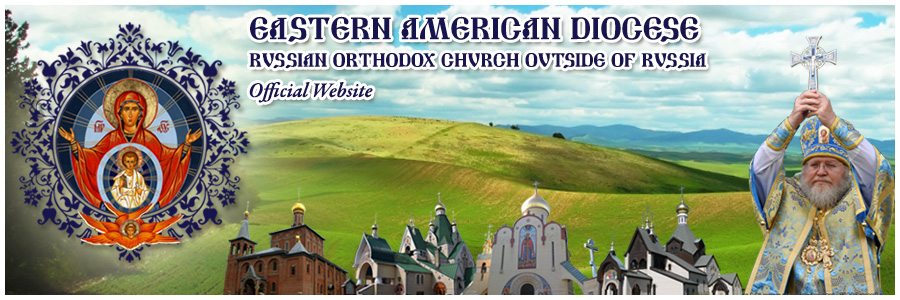Русская
Версия

 November
2, 2009
November
2, 2009
New
York: A
Sermon by His Grace, Bishop Jerome, on the 21st Sunday after Pentecost
On Sunday,
November 1st, the 21st Sunday after Pentecost and the feast of St.
John of Kronstadt, His Grace, Bishop Jerome of Manhattan, celebrated
the Divine Liturgy in the Synodal Cathedral. Upon completion of the
Liturgy, His Grace delivered the following sermon:
"A
sower went out to sow his seed" (Luke 8:5)
The Gospel
tells us what the seed is, and about the various hearers, but does not
directly identify the Sower or the act of sowing. The Sower, of
course, is Christ, in the person of His Church.
As for
“sowing,” it is the opposite of burying: instead of being
buried in one lump, the seed is scattered over the whole field. So the
Church scatters the Seed, not just beyond the people of Israel, but
also over the whole year for our edification. And the conclusion of
the Gospel further explains it for us: so that we may bring forth
fruit in patience. We are called on to be constant.
The sowing
of the seed is scattered both horizontally (over the whole human race,
over the entire year) and vertically (in depth each day). If we look
at the list of saints for each day, we get a microcosm of Church
history. For example, today the Church celebrates:
1) the
Prophet Joel, who foretold the coming of the Messiah and how Christ
would renew all;
2) the
martyr Ouar (Uvar, Ware) the Egyptian,
3) the
hieromartyr Sadoth of Persia,
4) the
venerable John of Ryla in Bulgaria, and
5) St. John
of Kronstadt.
Although
the main feast of St. John of Kronstadt is in early January by the new
calendar, today was the day he celebrated his nameday, since he was
named John in honor of St. John of Ryla. But I doubt that St. John of
Kronstadt would have wanted to overshadow or abolish the memory of his
patron Saint. So, in my parish in Milwaukee, we used to combine the
services for both. Likewise, on Dec. 25 we held a combined service for
St. Spyridon and St. Herman of Alaska.
For the
Greeks and some others, St. Spyridon, who was one of the Fathers of
the First Ecumenical Council, and a wonderworker, is a great Saint, on
a par with St. Nicholas (his contemporary). We should not think of the
more recently canonized Saints as being greater than those who went
before.
Another
mistake some of us make is “taking a vacation” from church after
Easter. Yes, we may be tired out after the long services in Lent and
Holy Week, but it is a pity to miss out on the most joyous time of the
Church year, by skipping the services of Paschal time. It’s better
to be “moderate, but constant” – moderate, perhaps, in our
Lenten attendance, but also moderate in continuing to come to church
after Pascha. Remember that a great deal can be achieved “po
nemnozhku, no vse vremia.”
If we study
a little at a time, but constantly, we can learn a lot: if we save up
our various resources, we can save a good deal; if we exercise,
physically or at any occupation, we can go far. So too if we pray “a
little at a time, but constantly,” we can gain a great benefit.
It’s
wrong when some suppose that having been baptized, “ischerpyvaet.”
There is no more sense to that, than supposing we need only to be
accepted by a university, and can then forget about going there or
attending classes, or that we need only to be listed as a doctor's
patient, and need not see him, or worry about our health. The
“scattering” means that we need, not only to receive the seed, but
to be constant in nurturing it. And then, we can “bring forth fruit
in patience.”
Amen.
Media Office of the Eastern American Diocese


